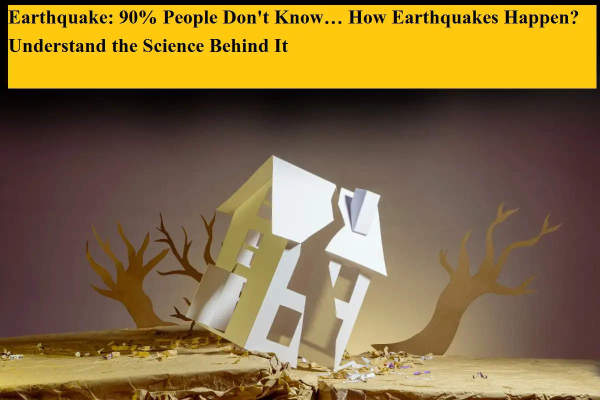
Earthquake: An earthquake is a dangerous natural disaster that causes significant damage to life and property worldwide every year. Understanding earthquakes is essential for everyone, and in this article, we explain how earthquakes occur.
What is an Earthquake?
An earthquake occurs when the earth's surface shakes. Earthquakes are caused by the sudden release of energy inside the Earth, generating seismic waves, which are known as S-waves.
There are mainly two types of seismic waves – P-waves (Primary waves) and S-waves (Secondary waves).
P-waves are the fastest and are felt first. They cause straight-line vibrations on the Earth.
S-waves are slower and cause shaking in a side-to-side motion, often causing more damage.
How Does an Earthquake Occur?
It is crucial to understand how earthquakes occur to mitigate the associated risks. Earthquakes happen when the tectonic plates inside the Earth move. These plates float on a semi-liquid layer beneath the Earth's surface and move slowly.
When two plates collide or move away from each other, stress builds up. When the pressure becomes too great, the plates suddenly shift, causing the Earth to shake.
What Causes the Most Dangerous and Fastest Earthquakes?
The most dangerous and rapid earthquakes occur when one plate starts to slide beneath another. This process is known as subduction. When the pressure becomes unbearable, the energy stored between the plates is released in a sudden shock, causing an earthquake. Understanding earthquakes is vital to developing better disaster preparedness and building resilient structures.
Why Do Earthquakes Happen?
Earthquakes don't just happen due to the movement of tectonic plates. Other geological events also contribute, such as volcanic activity. When a volcano is about to erupt, hot lava (magma) rises from beneath the Earth's surface. This creates pressure underground, causing the surrounding rocks to break apart. When these rocks fracture, a massive tremor is felt, creating seismic waves. Scientists measure these waves using an instrument called a seismograph.
Scientists Research the Patterns of Earthquakes
The strength of an earthquake depends on how much pressure had built up beneath the Earth and how quickly it was released. The more energy released, the stronger the earthquake. Scientists study earthquake patterns and develop warning technologies and building codes to ensure people's safety. This research helps in preventing disasters and making informed decisions for earthquake-resistant construction.
What Causes Earthquakes?
The following are the primary causes of earthquakes:
Tectonic Plate Movements: The shifting or collision of Earth's plates generates stress, leading to earthquakes.
Volcanic Activity: The rise of magma increases pressure and fractures surrounding rocks, causing earthquakes.
Fault Slippage: Sudden movements along fault lines release stored energy, causing earthquakes.
Isostatic Rebound: Sometimes, after glaciers melt or erosion occurs, the Earth's crust adjusts itself, which can trigger seismic activity.